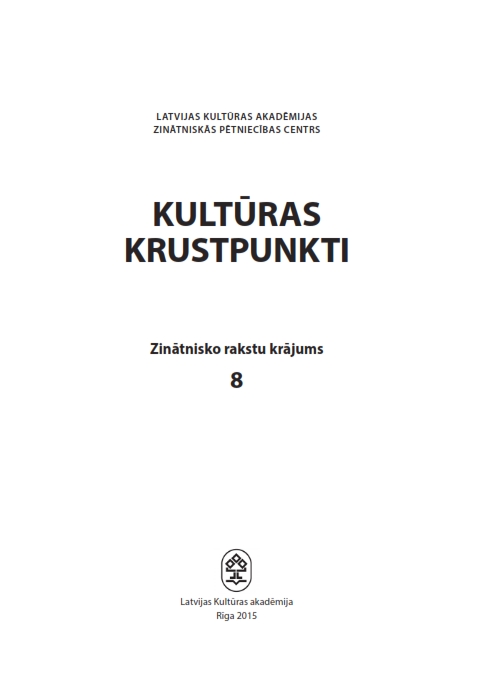LATVIJAS MODERNISMS UN KREISUMA IDEJAS.
MĀKSLINIEKU ROMANA SUTAS UN ALEKSANDRAS BEĻCOVAS PIEMĒRS
LATVIAN MODERNISM AND IDEAS OF LEFTISM: A CASE STUDY OF THE ARTISTS – ROMANS SUTA AND ALEKSANDRA BEĻCOVA
Author(s): Nataļja JevsejevaSubject(s): Cultural history, Visual Arts, History of ideas, Political history, Sociology of Culture, Sociology of Politics, History of Art
Published by: Latvijas Kultūras akadēmija
Keywords: Latvian modernism; leftism ideas; Romans Suta; Aleksandra Beļcova;
Summary/Abstract: The artists Aleksandra Beļcova (Александра Бельцова) and Romans Suta got acquainted with socialist ideas in Russia: Beļcova in her native gubernia (province) of Chernihiv (Ukrainian: Чернігів, Russian: Чернигов) already at the time of the 1905 unrest, while Suta at the beginning of World War I when he sought refuge in Russia. They both witnessed the 1917 October coup d’état in Petrograd. At the beginning of the 1920s Suta, Beļcova and other artists of the Riga group created cartoons for the leftist satirical magazine “Ho-Ho”. However, it is difficult to judge whether Suta had any specific political persuasion. Suta left an impression that he did not have a definite viewpoint but a particular position in certain issues. The evolution of Beļcova’s leftist views underwent a development which was on the whole characteristic of a number of her contemporaries: from an idealised enthusiasm to disappointment and a sense of tragedy. In the 1920s the ideas of socialists and communists were often synonymous with reforms and progress in the perception ofthe intellectuals. An educated woman-feminist with leftist views, it seems, was an ideal of the time for many people, however, for Beļcova it was not a matter of fashion. For her, leftism meant not so much her political position, as her denial of philistinism and her condemnation of greed. She kept to these principles all her life. It is important that in the art of both Beļcova and Suta, for the exception of several examples of applied art and separate designs, there are no works on themes reflecting any social criticism or something similar which would allow us to call their art proletarian or class oriented, or to ascribe any leftist ideology to it. It is criticism of the modern consumer society, order of the world and devaluation of moral and spiritual values. In this respect contemporary art can also be called leftist art.
Journal: Culture Crossroads
- Issue Year: 8/2015
- Issue No: 2
- Page Range: 179-186
- Page Count: 8
- Language: Latvian

